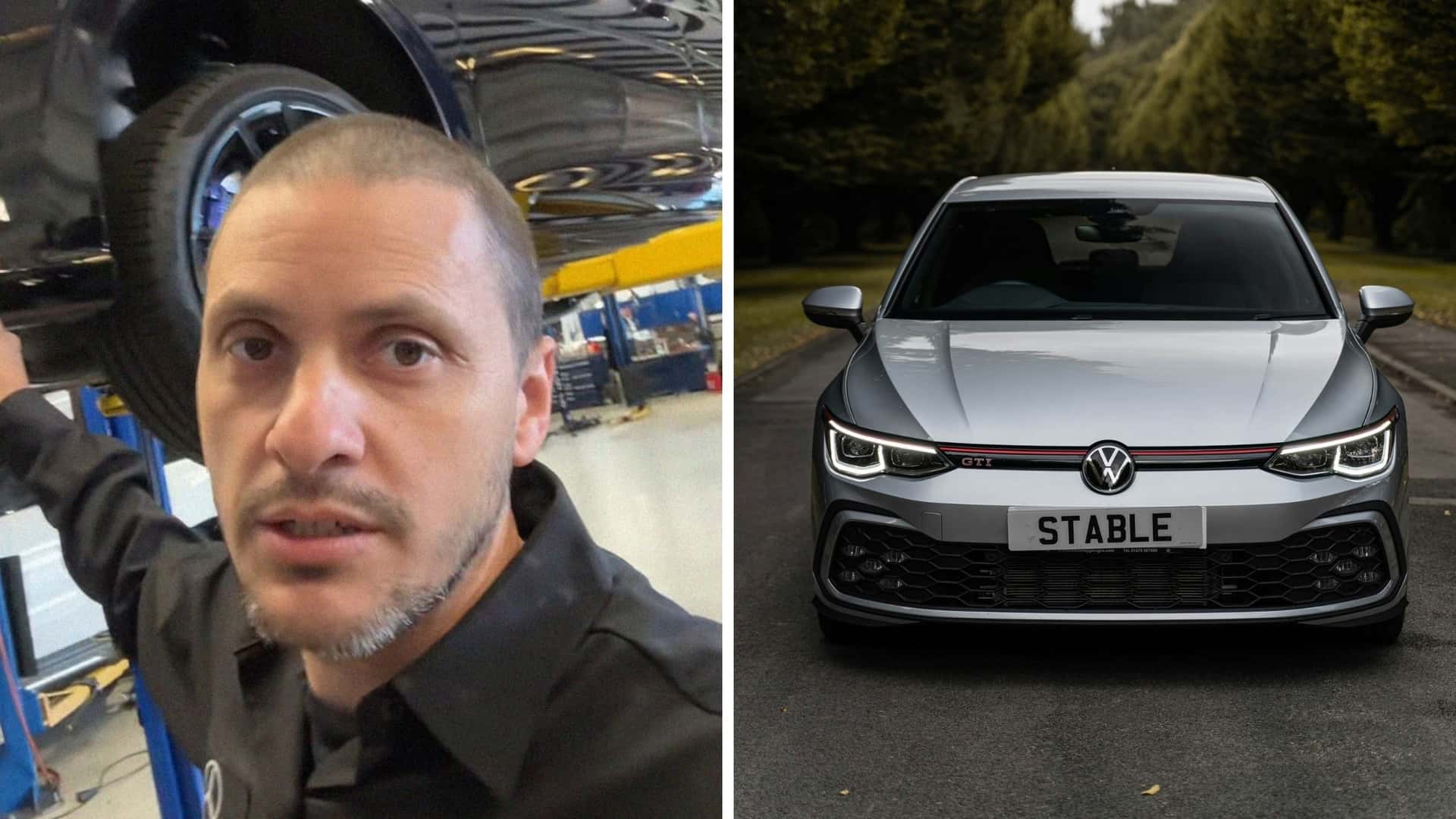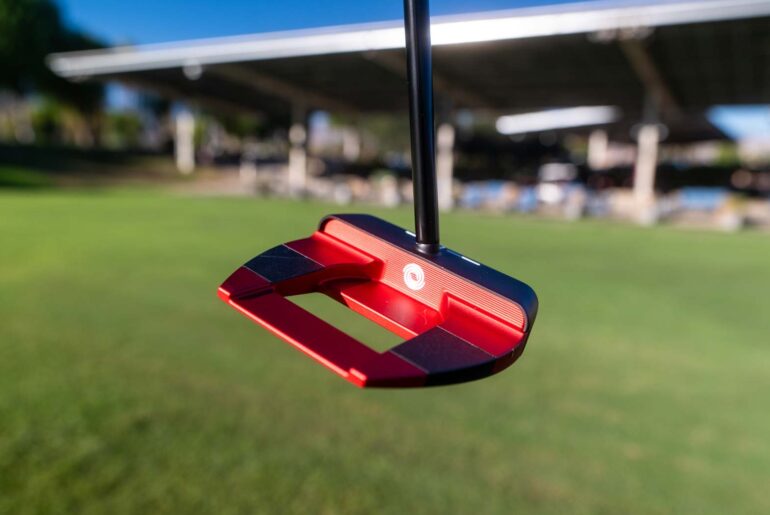“What would you do?” That’s the question a TikTok mechanic asked after discovering that a customer’s 2023 Volkswagen Golf R 20th Anniversary wasn’t wearing its factory 19-inch wheels, or even matching tires. His video quickly sparked a debate over whether used-car buyers should expect factory equipment or settle for what’s on the lot.
Helpful mechanic Carwerks101 (@carwerks101) is clearly put off by what he sees as a switcheroo pulled by the used car dealer who sold their customer a vehicle without some of its original equipment. Since the customer isn’t a car enthusiast but liked the Anniversary edition, he’s suspicious that the buyer got a downgrade of sorts and is driving on wheels and tires that won’t be fit for the long term.
“So, they give you mismatched tires. And, on top of that, somebody clearly swapped out the rims,” he said in the clip that’s been viewed more than 193,000 times. “Maybe at the dealership, maybe somebody that says, ‘I like those wheels. I would like to have, uh, those on mine.’ And these are clearly from the old Golfs.”
Smaller Wheels, Bigger Problems
The issue revolves around two key findings in the video: First, the wheels appear to be smaller than the factory-spec wheels for the Anniversary edition. According to tire industry data, the 2023 Golf R 20th Anniversary Edition is equipped with 235/35 R19 tires, which correspond to 19-inch wheels.
Secondly, the technician points out that the front tires carry a 2021 date, whereas the rear tires show a 2024 date and appear to be a different type altogether, an obvious mismatch. That combination, he argues, raises concerns not just about appearance but also about performance and drivetrain wear.
From a mechanical perspective, the size and matching of wheels and tires are more than cosmetic. The Golf R is an all-wheel-drive (AWD) performance hatchback with torque-vectoring and mechanical differentials that depend on predictable wheel diameter and tread. Mismatched tires, especially when they differ in diameter, age, or tread depth, can subject the drivetrain and differentials to extra stress. Fitment guides and enthusiast forums frequently caution that even a small deviation in tire size or tread can cause discrepancies in the traction system. So, while the modification might look benign to a casual buyer, in an AWD car like the Golf R, it can raise legitimate “will it last?” questions.
The video and its viral reach sparked a lively debate in the comments section, exposing the gulf between “buyer responsibility” and “dealer representation.”
Viral stories from across the web
Our team of experts tracks what owners are saying about car-shopping, repairs, the daily driving experience and more on social media.
On one side, commenters argued that a used car is sold “as-is” and the buyer assumes the risk: “Used car? Nobody to blame but the buyer,” one user wrote.
On the other hand, some pointed to what the listing or spec sheet may have promised, for instance, the correct 19-inch wheels, and argued that if the car was advertised with those, the deviation constitutes misrepresentation. One commenter noted that the “window sticker” may still represent factory equipment even on a used car. Others countered that once the car is sold used, what’s physically present matters more than the factory-issued Monroney label.
The back-and-forth highlights a territory of consumer expectation in used vehicles: Do you get what the factory installed when new, what the listing said you’d get, or simply whatever’s bolted on when you drive off the lot? The speculated dealer’s response in the video, telling the buyer, essentially, “tough luck,” further inflamed that debate.
![]()
13
Where “As-Is” Meets “As-Advertised”
Legally and ethically, the situation sits in a gray zone. A used vehicle sold with no warranty (“as-is”) generally limits the dealer’s obligation to restore or replace factory components unless the advertisement explicitly guaranteed them. But consumer-protection laws do require that items advertised must be reasonably present as described. From a mechanical standpoint, even if the wheels and tires are safe and fit the car, any deviation from OEM spec may lead to premature wear or performance compromise.
For the average buyer of a used performance car, the takeaway is clear: Inspect the wheels and tires as carefully as you review paint, mileage, or service history. Ask for documentation of tire manufacturing dates and tread depth, check the dealer’s listing or spec sheet against the physical equipment, and confirm that wheel size, offset, and tire size align with the factory reference. If you discover mismatches and the dealer won’t address them, you may face a decision: Trust the car’s condition as found, negotiate repair or credit, or walk away.
In the end, the viral video is a wake-up call in the used-car market, especially in performance segments. When you buy a used performance car, the wheels under it may tell a story more important than the odometer reading. And as this case shows, if the dealership wasn’t forthcoming about what changed, that oversight may cost more than just consumer confidence.
Motor1 reached out to the creator via direct message and post comment. We’ll be sure to update this if they respond.
We want your opinion!
What would you like to see on Motor1.com?
Take our 3 minute survey.
– The Motor1.com Team







